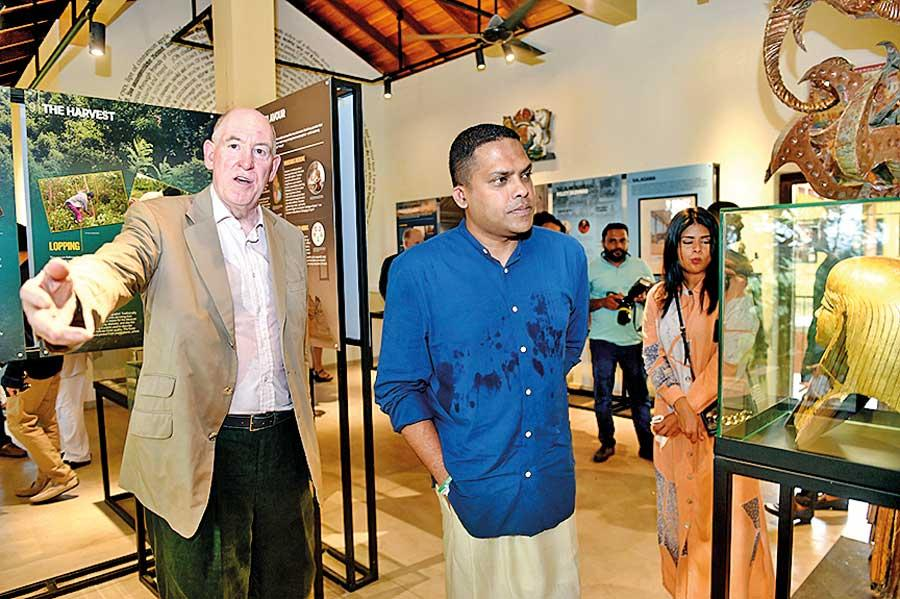The world’s first Cinnamon Museum was unveiled this week in Mirissa Hills, a cinnamon estate near Weligama.
The opening event was graced by Tourism Minister Harin Fernando, who called it a “brilliant idea” to make value to a Sri Lankan brand.
The Cinnamon Museum, a project by Global CEO- Ogilvy & Mather, Miles Young, who did extensive research and discovery of cinnamon, is a unique small resort with four bedrooms, where visitors can stay and experience a walk around the plantation, watch a demonstration of peeling and try out local food.

Explaining the idea behind opening the cinnamon museum, Young said, “People want to know more about this Sri Lankan product. Over the years, we have had a steadily increasing stream of visitors wanting to see what it looks like when growing, how it’s harvested, and from where it comes from. It is well known as a name, but also so little known.
Although cinnamon was one of the very first global commodities, there is a curious disconnect between the point of consumption and the point of production.”
The museum features the human history of cinnamon from the time of the Dutch and the Portuguese through photos, maps, sculptures. Visitors to the museum will surely know surprising and interesting facts about cinnamon which no one would have even imagined. The uses of this wonder plant will sure to surprise you.
“Over centuries it has provided taste in a way which allows cinnamon to play a role in the whole theory of humours and Ayurveda. And the same properties gave it an historic role in medicine in the humoral theory of medicine, but now recent science is casting light on its other properties: it is an effective antioxidant, it fights against bacteria, it reduces the blood glucose of type two diabetics and seems to mitigate HDL cholesterol.
This is Cinnamomum Zeylanicum – true cinnamon, indigenous to Sri Lanka,” he explained.
He also said cinnamon as a product has a competitor – cassia. Cassia is botanically completely different. It’s a large tree from which you chop out pieces of bark – you’ll see a sample inside. Cassia contains cinnamaldehyde, but is much less effective in delivering it. It also contains large quantities of coumarin, which is harmful, and which has been the subject of EU advice about over consumption.
